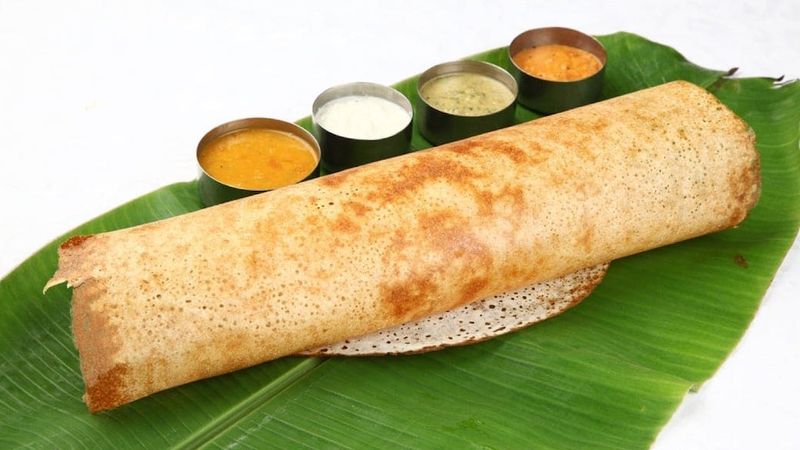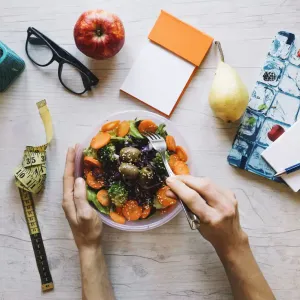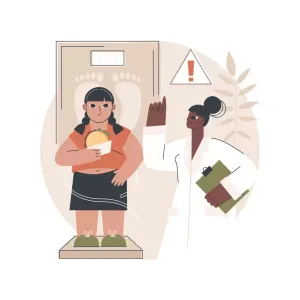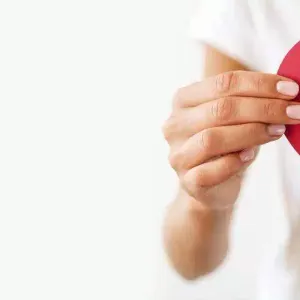

Our Review Process
Our articles undergo extensive medical review by board-certified practitioners to confirm that all factual inferences with respect to medical conditions, symptoms, treatments, and protocols are legitimate, canonical, and adhere to current guidelines and the latest discoveries. Read more.
Our Editorial Team
Shifa Fatima, MSc.
Author
Dr. Apoorva T, MHM.
MEDICAL ADVISOR
Is Dosa Good for Diabetes?
Diabetes is a condition that has affected hundreds of people worldwide. It is a hot topic , especially with people becoming conscious about their diet choices and lifestyle. Blood glucose levels and glycemic indices were once jargon, but people have become picky about eating healthy. There is awareness in the air and people who never debated over their traditional meals and are being sceptical about it.
Dosa has been the comfort food of Indian households forever. But recently, with the increased awareness regarding it being a major carbohydrate with comparatively less amount of protein and fibre they have started to wonder if dosa is healthy for people with diabetes for consumption. This article discusses the nutrition facts about dosa and healthy alternatives to regular dosa. Read it till the end and discover how dosa is good for diabetes.
Table of Contents
Benefits of Dosa for Diabetes
Social media feeds have confused everyone about whether dosa is good for diabetes. For any of you wondering, ‘Is dosa good for diabetes?’, below is why you can include dosa in your everyday diet.
- Dosa is a great way to include proteins in your everyday diet. Proteins are very beneficial for those with diabetes.
- They help you keep fuller for long and curb sugar cravings to not give in to your false hunger, and keep your blood glucose levels under control.
- It is also free from unhealthy fats so that your heart functions healthy for a long period.
- Usually, one medium to big size dosa (made at home, not the ones they serve in restaurants) has 133 calories. Eating two dosas for a meal is good to keep you full for long.
- The glycemic index of dosa is 77, which is not too high. So, you can enjoy your dosa meal guilt-free.
Can We Eat Dosa For Diabetes?
Yes, individuals with diabetes can include dosa in their diet, but portion control is essential. Opt for smaller servings, choose whole grain dosa if available, and pair it with fiber-rich accompaniments like chutney or sambar. Monitoring blood sugar levels and consulting a healthcare professional is advisable.
Dosa Glycemic Index
Dosa typically has a GI rating between 52 and 87, which is regarded as being moderate to high. This implies that eating dosa can significantly raise blood sugar levels, particularly in those who have diabetes. A flat pan or griddle is used to cook the fermented rice and lentil batter used to make the renowned South Indian dish known as dosa. Dosa's glycemic index (GI) might change based on the ingredients and cooking technique.
Benefits of Dosa
Dosa is a South-Indian dish made with two to three parts of white rice and one to two parts of urad dal. White rice has good amounts of carbohydrates and fibre. Urad dal is a rich source of protein. If eaten mindfully and in less quantity, it is a healthy dish. Dosa is simple to make but has the correct ingredients to provide you with all the macronutrients while keeping the blood glucose level under check. Dosa is a simple yet nutritious dish to add to your everyday diet if not already added. To make your dosa good for diabetes and extra nutritious, follow the recipes provided at the end of the article.

Which dosa is good for diabetes?
If you have constantly been asking yourself, ‘Is dosa good for diabetes?’, read the below section to add nutrition to the regular dosa that you make. If you are worried too much about your everyday carbohydrate intake and balance of various nutrients, then below are some healthy alternative options to regular dosa that you can try.
1. Spinach Dosa
Try making a spinach dosa with lower calories and glycemic index than a regular dosa to make your dosa good for diabetes. Spinach is a powerhouse of nutrients loaded with protein, iron, magnesium, vitamins and several other micronutrients that make your meal complete and wholesome. Also, you can get the protein from urad dal and balance out the carbohydrates that come from the regular dosa.
Steps to make:
- Soak spinach in water and rinse.
- If you do not like the raw flavour of spinach, cook them for 5 to 7 mins in a pan without oil. Grind after it cools down. You will get a thick paste of spinach.
- Mix the ground spinach with the dosa batter.
- Make your spinach dosas and savour the goodness of nutrients.
2. Ragi Dosa
Ragi is a rich source of protein and fibre and is an excellent option for people with doubts about ‘is dosa good for diabetes? ’The glycemic index of ragi dosa is 59 instead of 77 of regular dosa. This makes your meal wholesome and makes you feel full for a longer time.
Steps to make:
- Mix a few tablespoons of ragi flour with a pinch of salt.
- If you are fine with the taste, you can prefer making a dosa batter with only ragi and water and with little curd. But, if you are yet to get accustomed to the taste, start by mixing the ragi flour with regular dosa batter until you get the desired consistency.
- Cook it and savour the meal.
3. Oats and Besan Dosa
Oats are a great source of fibre. A glycemic index of 55 is a healthy way to make dosa good for diabetes. Besan is another great alternative to rice. With a glycemic index of only 20, it is very safe for you to consume if you are looking to lower your blood sugar level and stay fit and healthy.
Steps to make:
- Grind oats in a mixer until you obtain a powder-like consistency. If you like your dosa to be chunky, you can choose not to grind too much.
- Take a few tablespoons of besan in a bowl. Add the ground oats to it.
- Add a pinch of salt and one or two teaspoons of curd into the mixture and mix well. Keep adding water to obtain the batter consistency. You can also add vegetables of your choice to make it more healthy.
- Make dosa and consume it hot and crispy.
Does Dosa Increase Blood Sugar?
Dosa is a popular South Indian dish made from fermented rice and lentil batter, typically served with various chutneys and sambar. The effect of dosa on blood sugar levels can vary depending on several factors, such as the ingredients used, the method of preparation, portion size, and individual metabolism. However, it is generally considered to have a moderate impact on blood sugar levels.
The primary concern regarding dosa's impact on blood sugar arises from its high carbohydrate content, particularly in the form of rice. Carbohydrates are broken down into glucose during digestion, leading to an increase in blood sugar levels. However, the fermentation process involved in making dosa can reduce the glycemic index (GI) of the rice, which means it may have a slower and less pronounced effect on blood sugar compared to plain rice.
While specific research studies investigating the effect of dosa on blood sugar are limited, we can consider studies on similar foods to gain some insights. For example, a study published in the International Journal of Food Sciences and Nutrition in 2017 examined the glycemic index of various rice-based foods, including idli. The study found that idli had a lower glycemic index compared to cooked rice, indicating a potentially lower impact on blood sugar levels.
It's worth noting that the toppings or accompaniments served with dosa, such as chutneys and sambar, can also influence its overall effect on blood sugar. High-sugar chutneys or sambar with added sugars may contribute to a more significant blood sugar response. Opting for lower-sugar or fiber-rich accompaniments can help mitigate this effect. However, it's crucial to consider that individual responses to foods can vary based on factors such as metabolism, insulin sensitivity, and overall dietary composition. Therefore, people with diabetes or those concerned about their blood sugar levels should consult with a healthcare professional or a registered dietitian who can provide personalized advice based on their specific needs and health conditions. While there isn't an extensive body of research specifically on dosa and blood sugar, the information provided above is based on general knowledge about carbohydrates, fermentation, and similar foods. For specific advice or information regarding your health, it's always best to consult a healthcare professional or a registered dietitian.
Is Masala Dosa Good For Diabetes?
Masala dosa can be a part of a balanced diet for individuals with diabetes, but it's crucial to consider certain factors to manage blood sugar levels effectively. Portion size, ingredients, and overall meal composition play significant roles in determining the suitability of masala dosa for people with diabetes. Controlling portion sizes is key to managing blood sugar levels. It's recommended to have a moderate serving of masala dosa rather than a large one. Consider sharing it or ordering a smaller-sized dosa to avoid excessive carbohydrate intake. The filling in masala dosa usually consists of a potato mixture seasoned with spices. Potatoes are starchy vegetables that can affect blood sugar levels. While potatoes can be included in a diabetes meal plan, it's essential to be mindful of the quantity consumed and balance it with other non-starchy vegetables and protein sources. Additionally, the type and amount of oil used in the preparation of masala dosa can impact its overall nutritional profile. It's important to consider the overall composition of the meal. Including fiber-rich foods like salad, vegetables, and lentils in the meal can help slow down the digestion and absorption of carbohydrates, leading to a more gradual rise in blood sugar levels. Pairing masala dosa with a side of coconut chutney or sambar, which often contain lentils and vegetables, can provide additional fiber and nutrients.
Bottomline
Yes, Dosa is good for diabetes because it has an excellent nutritional profile. Dosa can be a little too heavy. But, adding some other ingredients and replacing the regular white rice can make it healthier and guilt-free to indulge. Being a medium glycemic index food, It can help people with diabetes to manage their blood sugar levels when eaten in moderation.
FAQs
1. What are the risks of overconsumption of dosa for Diabetics?
Any food, good or bad, when consumed more than the permissible limits, can prove unhealthy. So, try to limit your consumption of dosa to two or three per meal if you have diabetes.
2. How many dosas can a person with diabetes eat?
It is recommended to eat two or three dosa if you have diabetes. One medium dosa provides 133 calories, and eating two dosas can give you around 300 calories, which is sufficient for a meal. If you are extra hungry, you can have a half to one dosa extra.
3. What is the best time to eat dosa?
Dosa is usually eaten for breakfast and dinner as it does not make you too heavy but provides the required energy and nutrition to get through the day.
References
- https://healthydietfordiabetics.com/can-diabetics-eat-dosa-regularly/
Disclaimer
This website's content is provided only for educational reasons and is not meant to be a replacement for professional medical advice. Due to individual differences, the reader should contact their physician to decide whether the material is applicable to their case.








